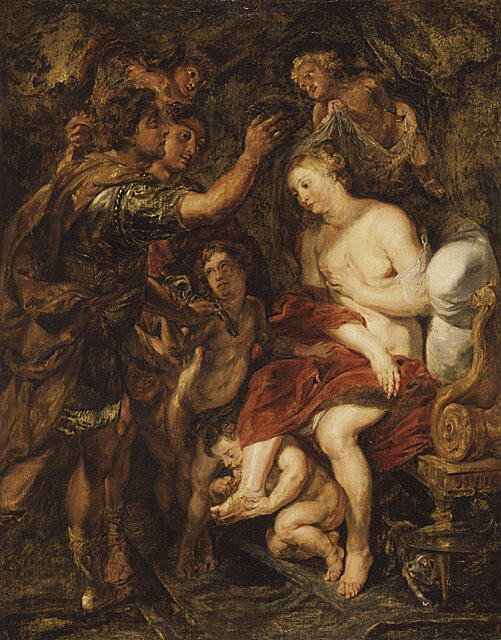
The Painting
The Crowning of Roxana is a painting by Peter Paul Rubens (1577–1640) that depicts Roxanne being crowned by Alexander the Great. The act of crowning signifies Roxanne’s marriage to the great warrior.
The daughter of a Sogdian nobleman from Balkh in Bactria (now known as Afganistan), Roxanne was married to Alexander the Great after the latter killed Roxanne’s father during Alexander’s conquest of the Persian empire. She bore him one son. (Artfact, 2006).
The Painter
The most sought-after painter of the seventeenth century, Rubens was the most renowned artist in Northern Europe during his time, and one of the foremost painters in Western art history. By completing the fusion of the realistic tradition of Flemish painting with the imaginative freedom and classical themes of Italian Renaissance painting, he fundamentally revitalized and redirected northern European painting. He is well known for his use of dazzling color, lively movement, and rich texture (Webmuseum, n.d., National Gallery of Art, 1992).
Discussion and Analysis
As in Rubens’ other paintings of the same genre, The Crowning of Roxana also made use of rich texture and vivid clash of light and shadow. The light comes from the left, so that the background, as well as the other elements in the painting except for the focal point, are shadowed. He then gave the illusion of light shining on the painting’s main element — Roxanne — hence dramatically drawing the eyes toward her. The angle of light further enhances what the painter wanted us to focus on.
Rubens’ attention to details, especially anatomical details, is evident in the Crowning of Roxana. He skillfully depicted a subdued facial expression befitting the occasion. As is true to his other paintings, Roxanne is endowed with a voluptuous body, and her anatomical details are vividly depicted.
As to color, Rubens used different tones of dark earthy color on the background and on the other elements surrounding the central theme. He then used a dramatically lighter tone on the central theme, thus giving the illusion of light focused on the painting’s focal point. Finally, he used a contrasting color on the cloth covering the central theme’s body, hence further drawing attention to Roxanne and giving the painting an overall dramatic effect.
The texture is another noteworthy element of the painting. Done on panel (not canvas) as was the more common support during Rubens’ time, the painting’s background has a very rich texture, thus giving an illusion of depth. The texture of the foreground is even richer, so that all the characters, even the cherubs in the foreground are given greater depth than the background. But still, Rubens put more emphasis on Alexander the Great than all the other elements, except Roxanne, whose emphasis was achieved through lighting effects on and details of her body, as well as the texture of the clothing on the lower part of her body.
Rubens’ paintings likewise depict restless movement. In The Crowning of Roxana where the subjects are caught in mid-movement, motion is depicted by the position of their hands (especially Alexander’s), the inclination of their bodies, the direction of their eyes, and the tilt of their heads, among others. This is further enhanced by the rich texture, and even by the angle of the light.
Another thing Rubens is known for is the use of allegories in his paintings which, again, is evident in The Crowning of the Roxana where cherubs are used to depict a figurative meaning to his work.
As to balance and proportion, Rubens used asymmetry in terms of shadow against light, in the use of color (earthy color against the more vivid reddish color) as well as in terms of the arrangements of the elements (subjects). The bodily movements are well balanced expected from a scene of crowning. The tone of colors the artist wanted his viewers to notice was enhanced by a well-angled source of light from the left side of the objects. We notice the vivid contrast of colors as manifested by the piece of cloth in front of Roxanne against the dullness of the cherubs and the uniformed soldiers.
Finally, elements are skillfully unified through the emotions shown on the subjects’ faces and in their movement, as well as in the choice of color used in the painting. Like his other paintings, The Crowning of Roxana is a priceless art piece showing the painter’s genius.
Bibliography
Artfact. (2006). Lot 253: After Sir Peter Paul Rubens. Web.
National Gallery of Art. (1992). Sir Peter Paul Rubens, (Flemish, 1577–1640). Web.
Webmuseum. (n.d.) Rubens, Peter Paul. Web.